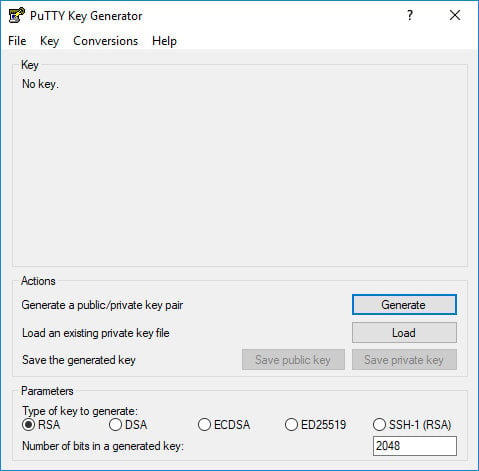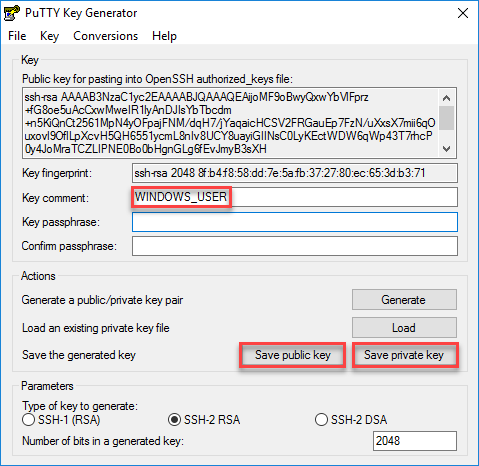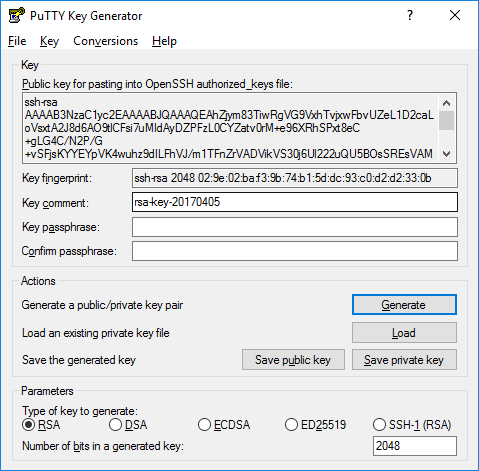
- #Putty ssh key authentication generator#
- #Putty ssh key authentication password#
- #Putty ssh key authentication windows#
#Putty ssh key authentication generator#
The following screen shot displays the PuTTY Key Generator utility. If you are using this key to authenticate a NetScaler appliance, then you should store this key in the /nsconfig/ssh/authorized_keys file on the remote NetScaler appliance. The public key should be copied to remote servers and appended to the ~/.ssh/authorized_keys file for UNIX hosts. Ensure that you store this key in a safe location to avoid anyone using it to gain unauthorized access. This key is used to authenticate remote servers. Save both public and private keys as separate files, such as id_rsa_pub.ppk and id_rsa.ppk. However, it is not recommended due to security reasons. If you do not enter a passphrase, then you can log on without a passphrase. Generate random data by moving the mouse cursor over the blank area.Įnter the e-mail address in the Key comment field to ensure that other administrators can identify the public key.Įnter a strong passphrase to protect the private key. To create a key pair for SSH authentication by using the PuTTYgen utility, complete the following procedure:ĭownload and run the PuTTY Key Generator Utility. Save the profile to preserve this configuration.Creating a Key Pair for SSH Authentication You should now be able to connect to the SSH Server using your public key: Once the public key has been uploaded or imported for your account in the SSH Server, configure the SSH Client to enable public key authentication on the Login tab: To do this, export the public key using the Client key manager:įor help with importing the public key into Bitvise SSH Server, check the Public Key Authentication section of our SSH Server Usage FAQ.
#Putty ssh key authentication password#
If the SSH Server does not allow you to connect using password authentication, or does not allow you to upload the key, you will need to send the public key to the server administrator using an alternate method of communication. If you are able to connect to the SSH Server using password authentication, you can connect to the server and upload the public key using the Client key manager: If you enter a passphrase, you will need to provide it every time the keypair is used for authentication.īefore you can use public key authentication, the public key for the keypair you have generated must be configured in the SSH Server. You can choose a passphrase with which to protect the keypair.
#Putty ssh key authentication windows#
In SSH Client versions 7.xx and higher, the setting Sensitive information accessibility on the Login tab controls whether a keypair stored in the profile can be read by another Windows user, or on another computer. It may be useful to store the keypair in a profile if the profile is going to be used on other computers, or by a job that runs as a different Windows account on the same computer.

When the keypair is stored globally, it is stored in the Windows registry for the current user, under HKCU\Software\Bitvise\Keypairs. If you have saved a named SSH Client profile, the keypair generation interface will offer to store the keypair either in the profile, or globally. Generate either an ECDSA keypair, or an RSA keypair of size 2048 bits or larger. Only 1024-bit DSA keys are interoperable in SSH, and this key size is no longer considered adequate when using the DSA algorithm. Unless required for compatibility reasons, do not generate a DSA keypair. Press the Generate button to generate a new keypair:

To generate a keypair using Bitvise SSH Client, run the graphical SSH Client, and open the Client key manager: To use public key authentication, the client from which you are connecting needs to have a public/private keypair. If this is the first time you are using public keys, we recommend the page Public keys in SSH.


Configuring public key authentication with Bitvise SSH Client


 0 kommentar(er)
0 kommentar(er)
